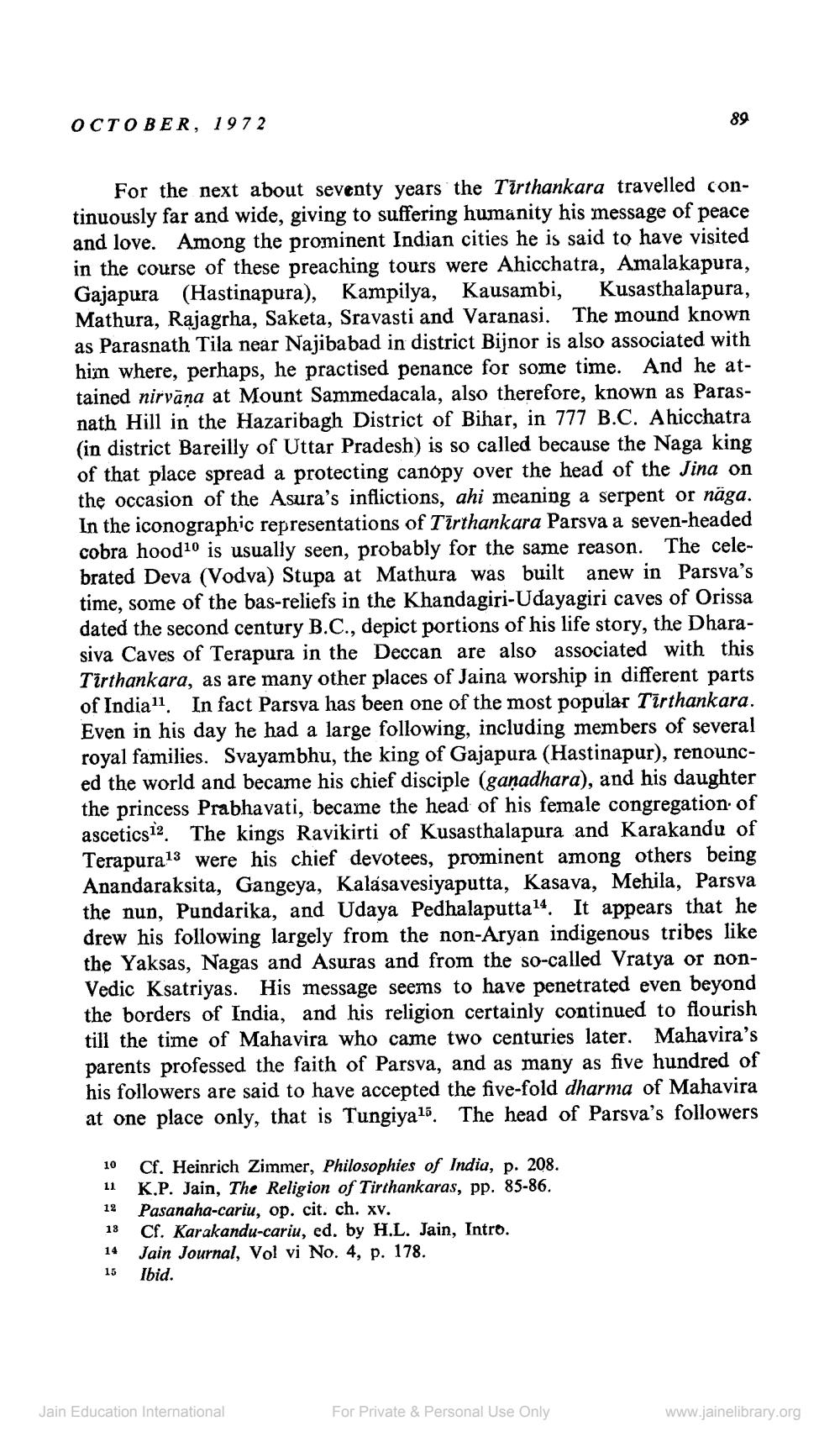________________
OCTOBER, 1972
For the next about seventy years the Tīrthankara travelled continuously far and wide, giving to suffering humanity his message of peace and love. Among the prominent Indian cities he is said to have visited in the course of these preaching tours were Ahicchatra, Amalakapura, Gajapura (Hastinapura), Kampilya, Kausambi, Kusasthalapura, Mathura, Rajagrha, Saketa, Sravasti and Varanasi. The mound known as Parasnath Tila near Najibabad in district Bijnor is also associated with him where, perhaps, he practised penance for some time. And he attained nirvāna at Mount Sammedacala, also therefore, known as Parasnath Hill in the Hazaribagh District of Bihar, in 777 B.C. Ahicchatra (in district Bareilly of Uttar Pradesh) is so called because the Naga king of that place spread a protecting canopy over the head of the Jina on the occasion of the Asura's inflictions, ahi meaning a serpent or näga. In the iconographic representations of Tīrthankara Parsva a seven-headed cobra hood10 is usually seen, probably for the same reason. The celebrated Deva (Vodva) Stupa at Mathura was built anew in Parsva's time, some of the bas-reliefs in the Khandagiri-Udayagiri caves of Orissa dated the second century B.C., depict portions of his life story, the Dharasiva Caves of Terapura in the Deccan are also associated with this Tirthankara, as are many other places of Jaina worship in different parts of India1. In fact Parsva has been one of the most popular Tirthankara. Even in his day he had a large following, including members of several royal families. Svayambhu, the king of Gajapura (Hastinapur), renounced the world and became his chief disciple (ganadhara), and his daughter the princess Prabhavati, became the head of his female congregation of ascetics 12 The kings Ravikirti of Kusasthalapura and Karakandu of Terapura13 were his chief devotees, prominent among others being Anandaraksita, Gangeya, Kalasavesiyaputta, Kasava, Mehila, Parsva the nun, Pundarika, and Udaya Pedhalaputta14. It appears that he drew his following largely from the non-Aryan indigenous tribes like the Yaksas, Nagas and Asuras and from the so-called Vratya or nonVedic Ksatriyas. His message seems to have penetrated even beyond the borders of India, and his religion certainly continued to flourish till the time of Mahavira who came two centuries later. Mahavira's parents professed the faith of Parsva, and as many as five hundred of his followers are said to have accepted the five-fold dharma of Mahavira at one place only, that is Tungiyal6. The head of Parsva's followers
10 11
Cf. Heinrich Zimmer, Philosophies of India, p. 208. K.P. Jain, The Religion of Tirthankaras, pp. 85-86. Pasanaha-cariu, op. cit. ch. xv. Cf. Karakandu-cariu, ed. by H.L. Jain, Intro. Jain Journal, Vol vi No. 4, p. 178. Ibid.
13 14
Jain Education International
For Private & Personal Use Only
www.jainelibrary.org




